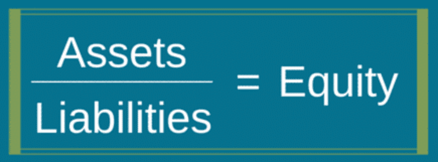
To understand the profitability of their business, many CEOs will only look at the income statement at the end of each month. Why? Because the income statement tells them what they want to see – how much revenue they made and whether there was a profit – The Bottom Line. But the income statement doesn’t show the whole picture of their business’s profitability.
|
Key Takeaways
|
A good financial manager looks at both the income statement and the balance sheet. Every accountant knows you need an accurate balance sheet to have an accurate income statement. If expenses and assets are not recorded properly or are in the wrong place, both reports will be incorrect.
Balance Sheet and Income Statement Explained
You might think that an income statement and a balance sheet shows you the same thing. You’re right in one aspect, they provide insight into your company’s finances, but each has its own set of variables.
A balance sheet is a snapshot of your financial data at a point in time. On the other hand, an income statement is like a video; it’s the cumulative view of your income over a period of time.
A balance sheet is comprised of your assets, liabilities, and equities.
What Are Assets, Liabilities, & Equities In Your Business?
Assets consist of cash, receivables, office furniture, equipment, prepaid expenses, etc. Liabilities are what you owe and include accounts payable, accrued expenses, bank debt and credit card bills.
After assets (what you own) are reduced by liabilities (what you owe), what remains is the net asset value of your company or equity. 
Your total equity balance allows a CEO to quickly assess if their business is more valuable than it was last month. Problems can arise when something is recorded wrong on either of the reports. For example, if expenses are coded as an asset on the balance sheet when it should be included on the income statement, it can affect both reports; i.e. the income statement would be overstated.
Read More: 3 Steps to Get the Most Out of Your Balance Sheet
How Your Balance Sheet and Income Statement Work Together
We are going to provide an example of how these reports should match up, because it is important to your business.
Let’s say you are sending employees to a field event that requires each to have an iPad. You spend $3,000 on the iPads, which needs to get recorded. If a bookkeeper doesn’t know if this was an asset or expense, they could assume it should be recorded as an asset under computer equipment because an iPad will last long term. However, since most businesses only capitalize or record things as assets if they exceed $5,000, this should have been coded as an expense and charged as a cost to that job.
By recording the iPads as an asset, and not an expense, you end up showing less expense and more profit than you really have for the company, customer and job. When you go to price that job next time, you might not provide the right bid because you didn’t see the true costs.
Why Having an Accurate Balance Sheet and Income Statement is Important for Your Business
Many CEOs will say that they made a lot of profit on paper but they don’t have any cash. We regularly hear the question “Where did all the cash go?” The answer always comes back to the balance sheet. If you took profits from the company and used it to buy assets, your cash went out the door. For example, when you record the iPads purchased as an asset, the profit of the company is not reduced, but your cash went out the door.
The same applies to liabilities. If you have $10k of credit card debt and you use cash to pay that down, it won’t show up on the income statement and you won’t have cash in the bank. We suggest that CEOs look at their balance sheet on a comparative basis each month. This allows them to compare last month’s to this month’s balance sheet to see where the cash went and investigate discrepancies.
Let Experts Deliver Your Financial Statements Each Month With Outsourced Accounting
One way to receive accurate numbers each month is through outsourcing your bookkeeping and accounting needs. Outsourced accounting services are experts and can provide reports that will help your business grow and make more money.
GrowthForce allows you to pick and choose which part of your bookkeeping, accounting, and controller functions you want to outsource. We work with internal employees, CFOs, and CPAs to make sure all the accounting needs of a business are being taken care of and provide financial reporting on month-end.
Our cloud-based bookkeeping and accounting services allow you to begin where you need help and add on additional services when needed. We provide outstanding client service with a U.S.-based team of a bookkeeper, staff accountant, and accounting manager who provide the expertise you need to run your business. Put your numbers to work!

.png?width=563&height=144&name=New%20GF%20Logo%20(37).png)

